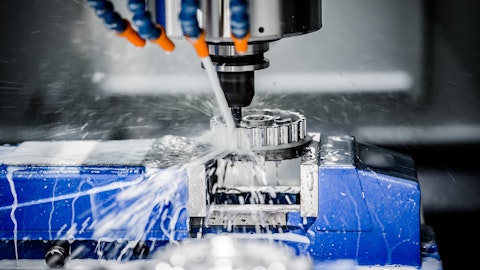Steve Cotton: Yes. So, lots of milestones to come. For 6K and Dragonfly, we’ll, of course, see progressing those relationships. And we believe that we’ll be announcing new relationships and partnerships, both from the feedstock and offtake part of the ecosystem. So, there’ll be those commercial developments that are continuing to work through the cycle of engaging with these other parties and really the tool that we’re using to do that, of course, is not only our own organizational capability, but leveraging that people can come and witness our pilot operating and producing these materials, see it for themselves, and those commercial partnerships will continue to progress. But of course, we’ll also see the pilot progress into the Sierra ARC facility, which is just about 1.8 miles down the road from the pilot operation.
As Judd was mentioning earlier, that is expected to start coming online, black mass material into it in Q2 of next year, which really isn’t that far away. It’s only a matter of a few months until we begin to start commissioning and then ultimately producing tonnage of materials from that facility. So, we’ll see that type of progress. And then further with our existing relationships, I mentioned 6K and Dragonfly, but also our licensing partner and investor Yulho Materials in South Korea, we anticipate that we’ll be able to work out the details of the licensing agreement tied to some due diligence that both parties are completing inclusive of our business and technical trip we’ll be making to South Korea soon and we’ll be able to announce some news there.
On the financial development side, we’re continuing to keep that balance sheet strong. Judd mentioned where we are with the USDA loan application, which we’re very confident in, but we also have alternatives to that don’t have quite as nice terms as the USDA has for the loan guarantee program. But we will see continued strength of the balance sheet as we progress through the year as our planned set of milestones.
Sameer Joshi: And just — I know you mentioned this, but I just wanted to clarify. The additional funding that you’re seeking is not required for the completion of the Phase 1 of the Sierra ARC, is that correct?
Judd Merrill: So, Sameer, if I got the question right, you’re talking about the funding for Phase 1 CapEx. Is that right?
Sameer Joshi: Yes. Yes.
Judd Merrill: Yes. So, we do need — we do require either the USDA or some type of debt instruments to complete that project. We ended the quarter with just almost $26 million in cash, but the bigger cash outlays for the CapEx are coming in the next few months. And so that’s what we’ve been working towards to make sure that we ensure that we have the funding to do that. And the intent is to do that with the debt finance.
Sameer Joshi: Okay. So, are there any long-lead items that need to be purchased now so that you can have the facility up and running mid-next year?
Steve Cotton: We already did purchase some really long lead-items last year, which is the switchgear and there’s a global supply chain challenge with getting a switchgear. That’s the equipment that takes the main power from a power drop to a facility and distributes the power throughout the facility. So, we’ve secured delivery dates of that for early next year. So, that long lead-time has already been taken care of as well as the electrical supply itself. Other long lead-time parts and materials have been ordered already and that’s what Judd was talking about in terms of our CapEx expenditures ramping as we go through the quarter. And Judd may have something to add.
Judd Merrill: Yes. I mean a lot of the — what we’ve spent so far is putting deposits down on the long lead-time equipment once we’ve gone through the process of selecting the vendor and meeting with them. We spent quite a bit of time ensuring that we understand the sources embedding them out and making sure that they fit our needs and then putting deposits down. So, now we’re moving into bringing things on site and start the installation process. So, it’s a lot of foundational work has been done. Now, we’re going to be very rapid on installation and construction.



